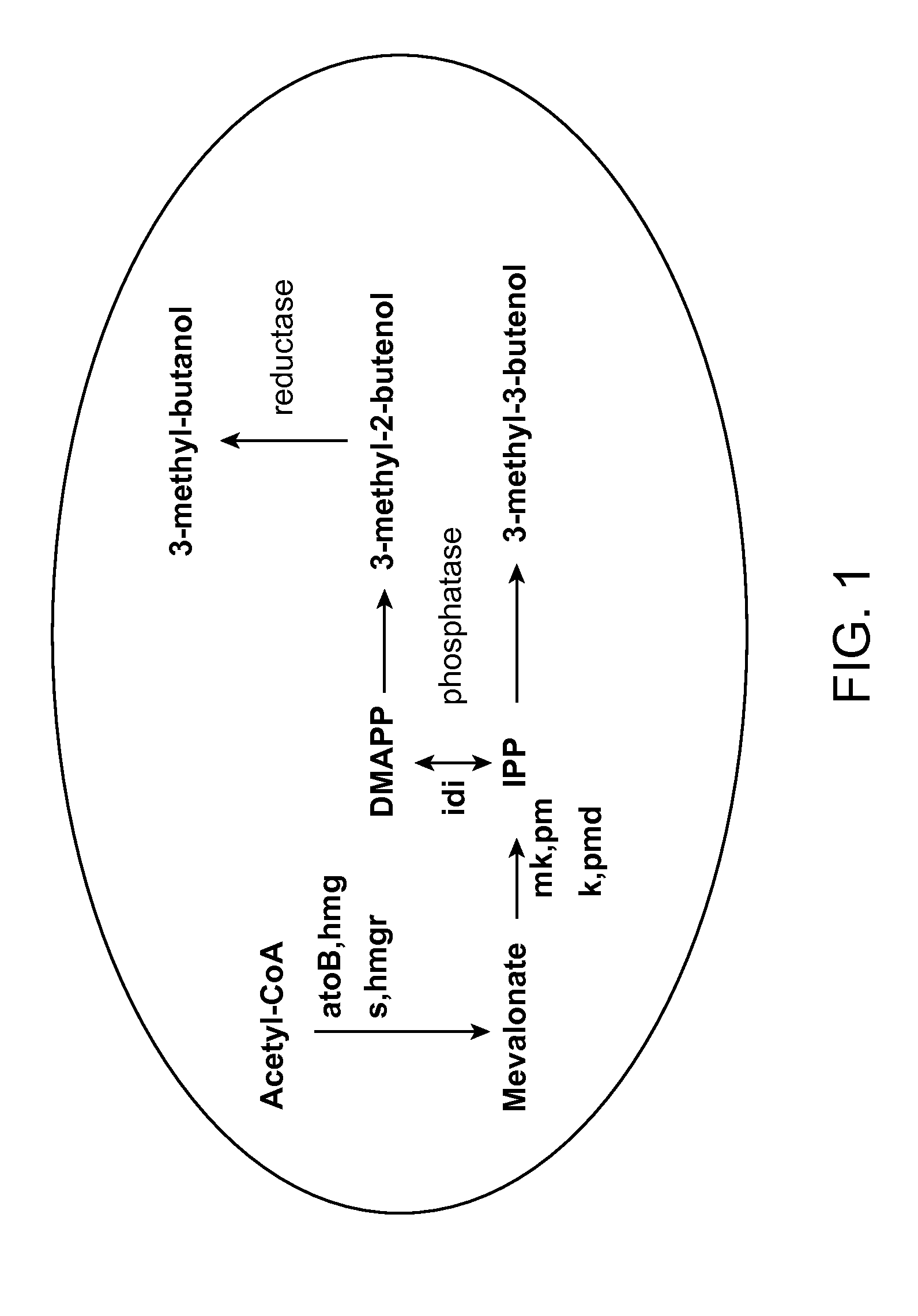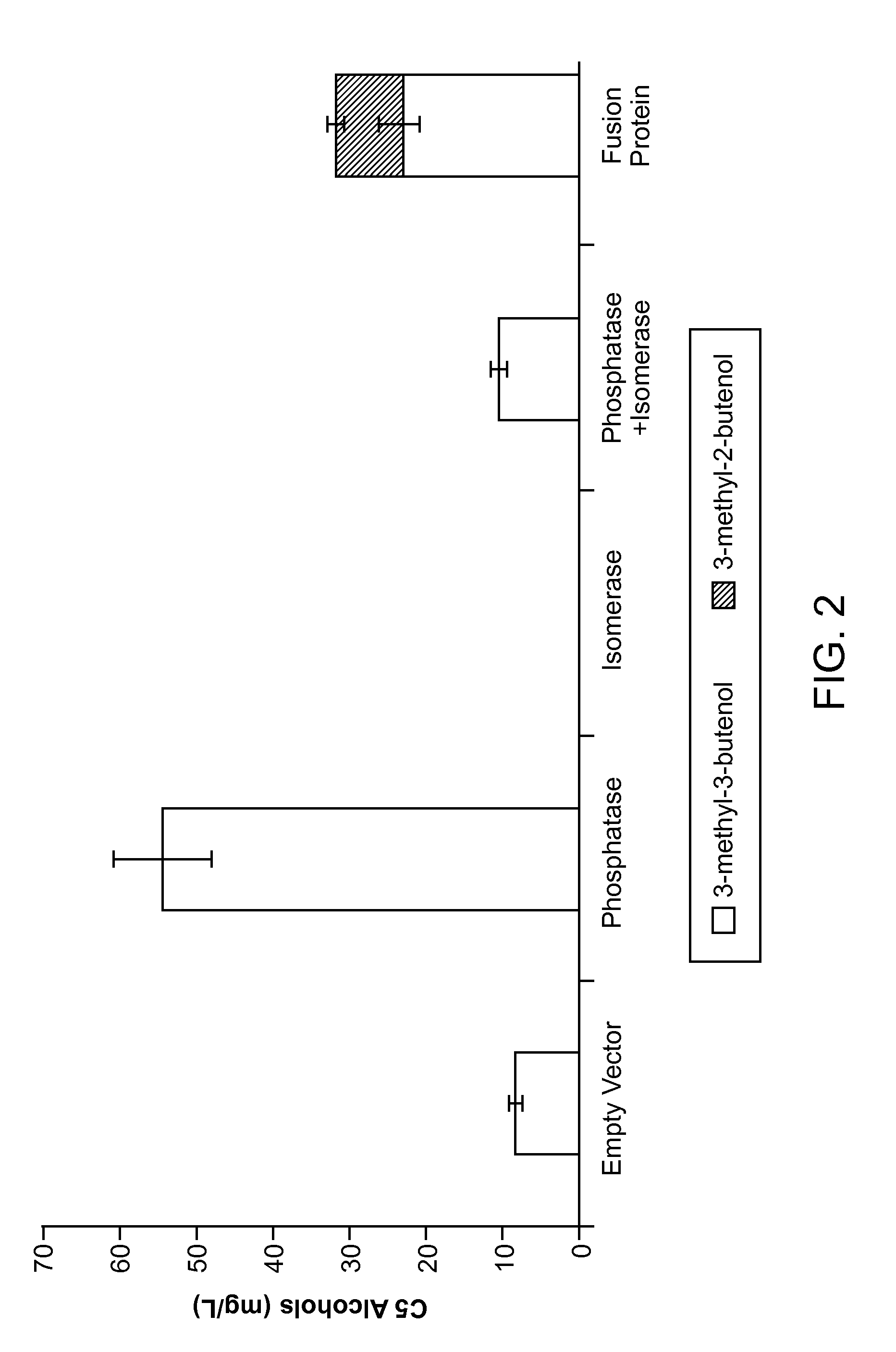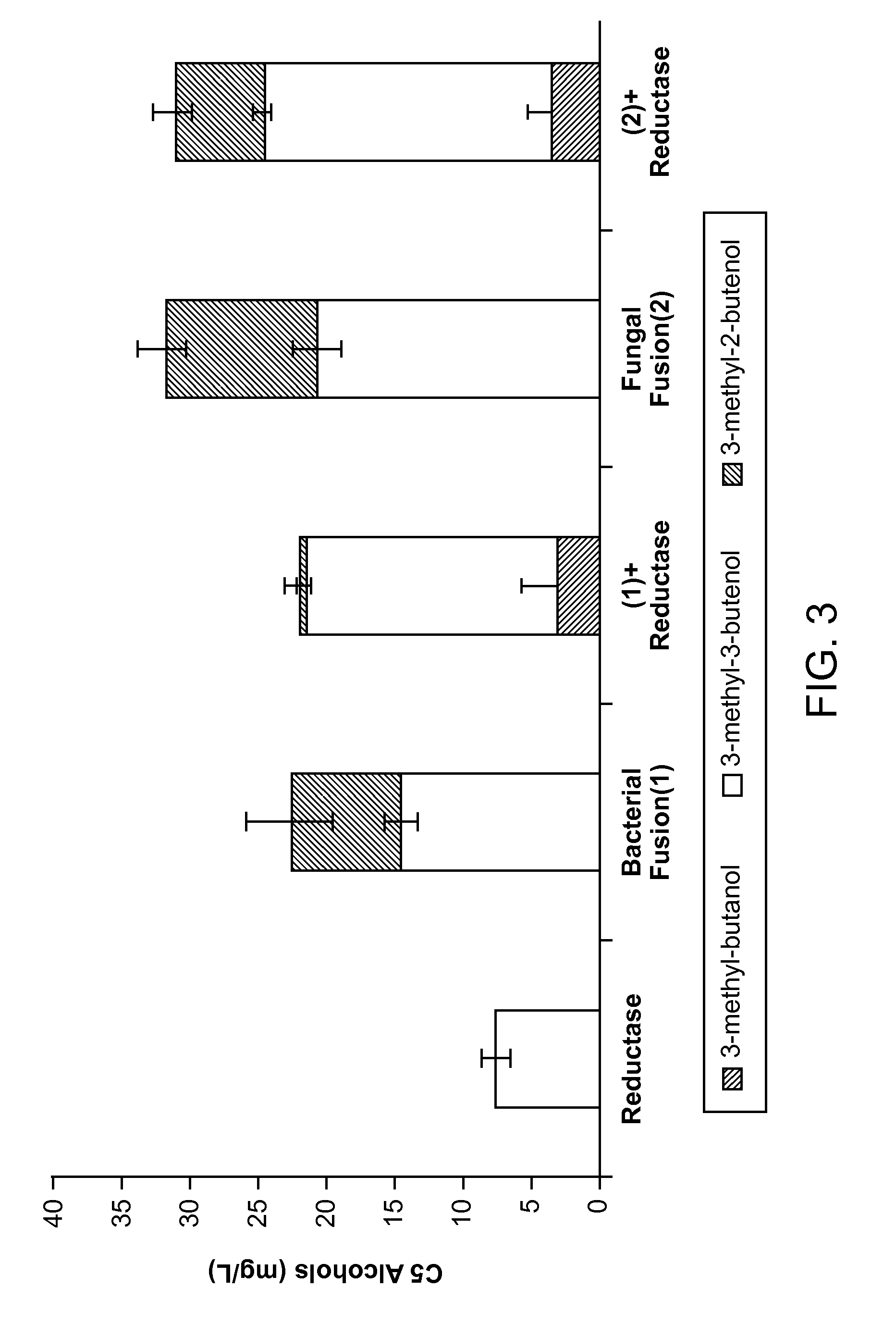Methods for increasing production of 3-methyl-2-butenol using fusion proteins
a technology of fusion proteins and 3-methyl-2-butenol, which is applied in the direction of biofuels, microorganisms, enzymes, etc., can solve the problems of unrenewable energy sources and the debatable efficiency of ethanol as a fuel, and achieve the effect of increasing the production of 3-methyl-2-butenol
- Summary
- Abstract
- Description
- Claims
- Application Information
AI Technical Summary
Benefits of technology
Problems solved by technology
Method used
Image
Examples
example 1
Expression of Fusion Proteins in E. coli
[0072]FIG. 2 provides data showing that expression of IPP isomerase can reduce the production of 3-methyl-3-butenol such that little or no 3-methyl-2-butenol is observed. This example demonstrates that fusion proteins comprising a phosphatase fused to an IPP isomerase results in enhanced production of 3-methyl-2-butenol.
Materials and Methods
Strains and Media
[0073]All solvents, standards, and antibiotics (e.g. tetracycline, chloramphenicol, ampicillin) were purchased from Sigma-Aldrich (St. Louis, Mo.) unless otherwise indicated. 3-methyl-3-butenol, 3-methyl-2-butenol and 3-methyl-butanol were purchased from Tokyo Chemical Industry (Portland, Oreg.). Phusion polymerase was purchased from Finnzymes (Lafayette, Colo.). All restriction enzymes were purchased from Fermentas (Glen Burnie, Md.). All primers were ordered from Integrated DNA Technologies (Coralville, Iowa).
Construction of Fusion Proteins.
[0074]The fusion protein comprises of an IPP is...
PUM
 Login to View More
Login to View More Abstract
Description
Claims
Application Information
 Login to View More
Login to View More - R&D
- Intellectual Property
- Life Sciences
- Materials
- Tech Scout
- Unparalleled Data Quality
- Higher Quality Content
- 60% Fewer Hallucinations
Browse by: Latest US Patents, China's latest patents, Technical Efficacy Thesaurus, Application Domain, Technology Topic, Popular Technical Reports.
© 2025 PatSnap. All rights reserved.Legal|Privacy policy|Modern Slavery Act Transparency Statement|Sitemap|About US| Contact US: help@patsnap.com



